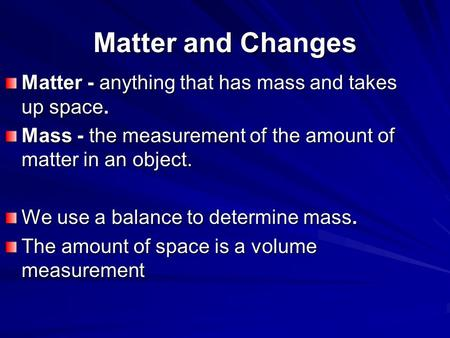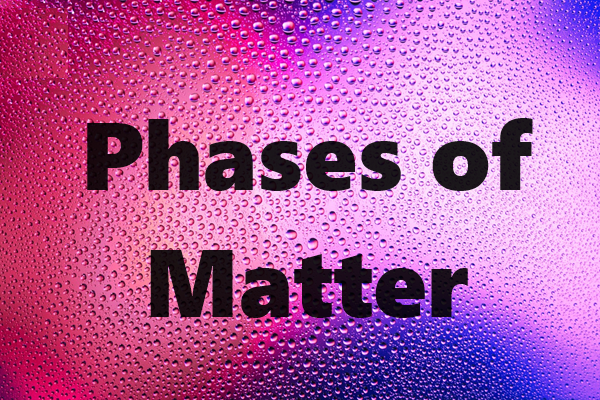Unit 4: Changes in Matter
Unit 4: Changes in Matter

Unit 4: Changes in Matter

Unit 4: Changes in Matter
Physical and Chemical Changes to Matter
There are two types of change in matter: physical and chemical. There are two types of change in matter: physical and chemical. As the names suggest, a physical change affects a substance’s physical properties, and a chemical change affects its chemical properties. Many physical changes are reversible (heating and cooling), whereas chemical changes are often irreversible or only reversible with an additional chemical change.
Physical Changes
Another way to think about this is that a physical change does not cause a substance to become a fundamentally different substance. Still, a chemical change causes a substance to change into something chemically new. Blending a smoothie, for example, involves two physical changes: changing the shape of each fruit and mixing many different pieces of fruit. Because none of the chemicals in the smoothie components are modified during blending (the water and vitamins from the fruit are unchanged, for example), we know that no chemical changes are involved.
Cutting, tearing, shattering, grinding, and mixing are physical changes because they change the form but not the composition of a material. For example, mixing salt and pepper creates a new substance without changing the chemical makeup of either component.
Phase changes occur when substances are melted, frozen, boiled, condensed, sublimated, or deposited. They are also physical changes because they do not change the nature of the substance.
Chemical Changes
Chemical changes are also known as chemical reactions. The “ingredients” of a reaction are called the reactants, and the results are called the products. An arrow signifies the change from reactants to products:
Reactants → Products
The formation of gas bubbles is often the result of a chemical change (except in the case of boiling, which is a physical change). A chemical change might also result in the formation of a precipitate, such as the appearance of a cloudy material when dissolved substances are mixed.
Rotting, burning, cooking, and rusting are all further types of chemical changes because they produce substances that are entirely new chemical compounds. For example, burned wood becomes ash, carbon dioxide, and water. When exposed to water, iron becomes a mixture of several hydrated iron oxides and hydroxides. Yeast carries out fermentation to produce alcohol from sugar.
An unexpected color change or odor release also often indicates a chemical change. For example, the color of the element chromium is determined by its oxidation state; a single chromium compound will only change color if it undergoes an oxidation or reduction reaction. The heat from cooking an egg changes the interactions and shapes of the proteins in the egg white, thereby changing its molecular structure and converting the egg white from translucent to opaque.
The best way to be entirely sure whether a change is physical or chemical is to perform chemical analyses, such as mass spectroscopy, on the substance to determine its composition before and after a reaction.
Vocabulary
Lesson Reading

